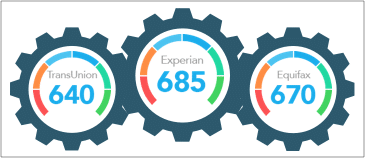The Automated Clearing House, more commonly known as ACH, is a network that facilitates electronic payments and automated money transfers between banks and other financial organizations. ACH transfers are also one of the primary ways we send and receive money online.
ACH Transfers Explained
An ACH transfer is a bank-to-bank movement of funds carried out by the Automated Clearing House network, a major U.S. payment system.
Presently, these transactions do not take place in real-time. Rather, banking institutions “batch process” all the requests throughout the day all at once. This is why it takes one or two days for funds to move from one account to another.
If you see ACH on your bank statement, it means a transaction occurred using your checking account information including your banking and routing number
If you see ACH on a bill, it means you have the option of submitting an electronic payment with your checking information. There is no need to enter your credit card number each time you make a payment. Instead, you can use your checking account details to pay right from your account.
Here are some of the most common purposes to use ACH transfers:
- Employer Direct Deposit
- Employer-Reimbursed Benefits
- Person-to-Person Payments
- Bill Payments
- Transfers Between Banking Institutions,
- Tax Refunds
- Interest Payments
- Annuity Payments
- Government Benefits.
- Payments from Businesses to Vendors
- Money Transfer From Brick-and-Mortar to Online Bank
Different Types of ACH Transfers
The ACH Network processes two different types of transactions: direct deposit and direct payment. Direct deposits are typically payments from a company or the government to an individual. Conversely, direct payments are when individuals transfer money to another entity.
Refer to these examples to get a better understanding of the different ACH transfer types:
- Direct Deposits:
This occurs when you receive employee paychecks, interest payments, tax refunds and Social Security or pension benefits.
- Direct Payments:
Include both ACH debit and ACH credit transactions. ACH debit transactions are a preferred method to pay recurring monthly payments, such as bills and loans. ACH credit transactions are often used to direct a single transfer of money from one account to an account at another bank.
How Long Do ACH Transfers Take?
When it’s important to make a quick payment, consider this: ACH credit transfers generally process in one to two business days depending on the banking institution. ACH debits, on the other hand, only take one business day to complete.
ACH debit transactions must be fast to facilitate prompt payments on bills, loans, and other high priority expenses.
Since ACH transfers are managed by banks the network only operates during operating business hours on business days. That means if you transfer funds anytime on a Friday or weekend day the transaction may not complete funding until the following week.
You can expedite an ACH transfer for same-day payment as the ACH runs two batches of payments each day for settlement. If you file a transfer before 10:30 AM EST it will settle by 1:00 PM EST. Likewise, all transfers that are set up before 2:45 PM EST process by 5:00 PM EST.
What Are the Costs of ACH Debit Transfer?
Most ACH debit transfers are free and a convenient way to handle bills, direct deposits or other money transfers. Same-day transfers sometimes require a fee, depending on the bank.
ACH credit transfers from your bank to an external banking account can range from free to a $3 fee. When fees are incurred, it’s usually for sending money while receiving funds are typically free. Person-to-person payments through your bank or an app like PayPal may charge a small fee, depending on the platform.
ACH Transfers vs Wire Transfers
There are three areas in which ACH transfers differ from traditional wire transfers:
Time to Transfer:
ACH transfers typically require one to three business days to complete and they are not always available internationally. By contrast, wire transfers usually complete within one business day. Many people prefer wire transfers when they need to transfer money quickly and/or abroad.
Security:
When you send money via a wire transfer, the money must be in your account before the bank will send the funds. They function much like an electronic cashier’s check in that the bank will not transfer funds unless they are available, which means that creating fake wire transfers is incredibly difficult.
Make sure you have complete confidence in the person you are sending the money to because wire transfers are not reversible. Once the recipient receives funds, they can withdraw the money immediately.
While ACH transfers are also a safe way to transfer funds, they can be reversed. For instance, if your employer accidentally overpays you they can reverse the transfer. The same is true for fraudulent withdrawals from your account; they are also reversible.
Cost:
ACH transfers are usually free, particularly if you’re receiving funds. Sending money is often free of charge as well, although some banks, such as Bank of America and TD Bank charge $3 for the service.
Fees are usually applied when you wire money Banking institutions generally charge $10 to $35 for a domestic wire transfer with even higher fees for international transfers.
The Bottom Line
ACH transfers are commonly used for smaller, regular payments. They provide a cost-effective means to make monthly bill payments and accept direct deposits from your employer or from your Social Security account. ACH transfers are also a convenient way to contribute to your retirement and savings accounts or transfer money between your accounts at different banks.
Check your bank’s policy when you are the one sending money. You may be subject to fees, unforeseen processing delays and limits to how much you can send.





